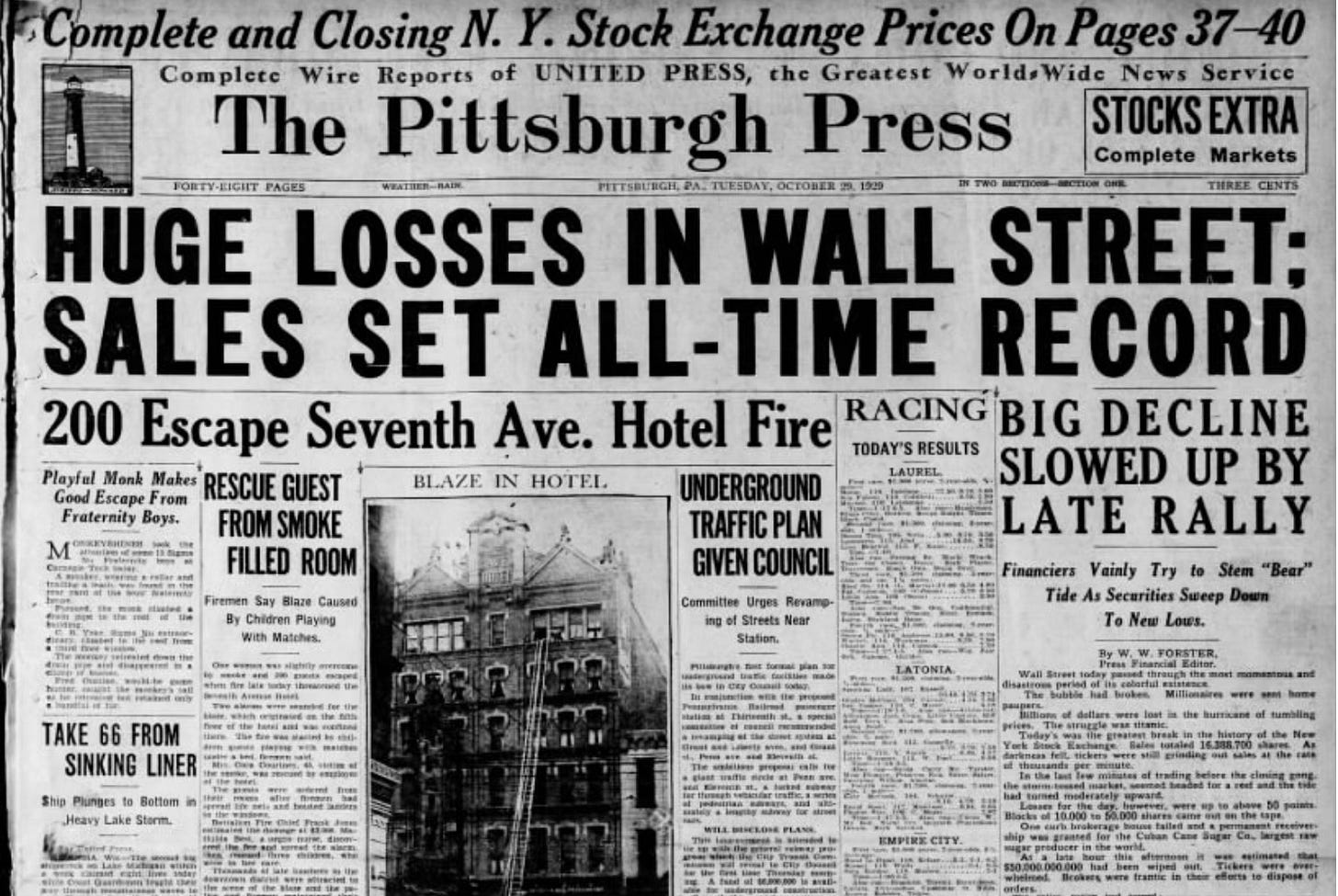Today’s DOTD - Drink Of The Day - is Cornwall Negroni, sometimes called a “Black Cocktail,” inspired by the historical event of Black Tuesday, the catastrophic stock market crash that occurred on October 29, 1929, an event that most consider to mark the beginning of the Great Depression.
The “Roaring Twenties,” the decade that followed WWI, began with optimism - and a lot of risk.
The risk began with massive industrial expansion in the U.S., much of that paid for with borrowed money. Industrialists weren’t the only ones borrowing money. On the stock market, experienced investors were borrowing money to buy “on margin” - an action where investors paid only a fraction of the stock’s price, and then borrowed the rest.
At the same time, the stock market was filled with speculation, & market manipulation was rampant - and legally allowed. Small groups of wealthy investors would pool their money, and artificially inflate a stock’s price. Then, through contacts in the media, they’d create a buzz about a particular stock. When other investors began to flood in and prop up the stock, those investors in the pool would cash out, leaving everyone else in a lurch.
There’s more.
Many members of the public, disappointed by the low interest rates offered on their bank deposits, also invested their relatively small savings in the stock market. Banks, in an attempt to woo those customers back, also began investing in the market, some even directly investing the savings of their customers in the stock market.
All of that set the table for what was to come.
By 1929, the U.S. economy was showing signs of trouble. The agricultural sector was depressed due to overproduction and falling prices. This forced many farmers into unsustainable levels of debt. Consumer goods manufacturers also had unsellable output, due to low wages, and thus had limited purchasing power. Factory owners cut production and fired staff, reducing demand even further. Despite these trends, investors continued to buy shares of companies in areas of the economy where output was declining and unemployment was increasing, - so the purchase price of stocks greatly exceeded their real value.
By September 1929, more experienced shareholders realized that prices could not continue to rise, and so they began to get rid of their holdings. That caused share values to stall and then fall, encouraging more people to sell. As the selling increased, so did the margin calls, which just made the situation worse. As investors panicked, the selling became frenzied.
After a week of back and forth spikes in selling, on October 29, 1929, “Black Tuesday” hit Wall Street, hard. Investors traded some 16 million shares on the New York Stock Exchange in a single day. The panic selling reached its peak with some stocks having no buyers at any price. William C. Durant, the wealthy industrialist and founder of General Motors, joined with members of the Rockefeller family and other extremely wealthy people to buy large quantities of stocks, in an attempt to stop the crash & demonstrate to the public their confidence in the market. But their efforts failed.
At the end of that day, around $14 billion of stock value was lost - equivalent to $240 billion today. Thousands of investors were completely wiped out. The Dow lost an additional 30.57 points, or 11.73%, for a total drop of 68.90 points, or 23.05% over two days.
Did Wall Street’s finest leap from their windows, as many believe? Not as many as you would think. Though Winston Churchill witnessed a suicide the day after Black Tuesday, one man dragged from a window ledge to save him from suicide turned out to be a window cleaner.
While some of New York City’s wealthy did turn to suicide in the aftermath of the stock market crash, it’s reported that many more turned to drinking, heavily. We think a Cornwall Negroni would have been a fitting option.
In the end, it took the Great Depression, World War II, a massive reorganization of the U.S. federal government, and major banking regulations to heal the economic health of the U.S. The Dow Jones wouldn’t return to its pre-1929 crash heights until November 1954.
From the mid 1950s until the early 1980s - when the deregulators and market speculators began to return - the United States had its largest ever economic expansion, and created the largest ever economically stable middle class in human history.
Ingredients
Here’s what you’re going to need for this drink:




